
Фразеология CAA (приложение)
.pdf
Supplement to CAP 413
RADIOTELEPHONY MANUAL
A Quick Reference Guide
to UK Phraseology
For Commercial Air Transport Pilots
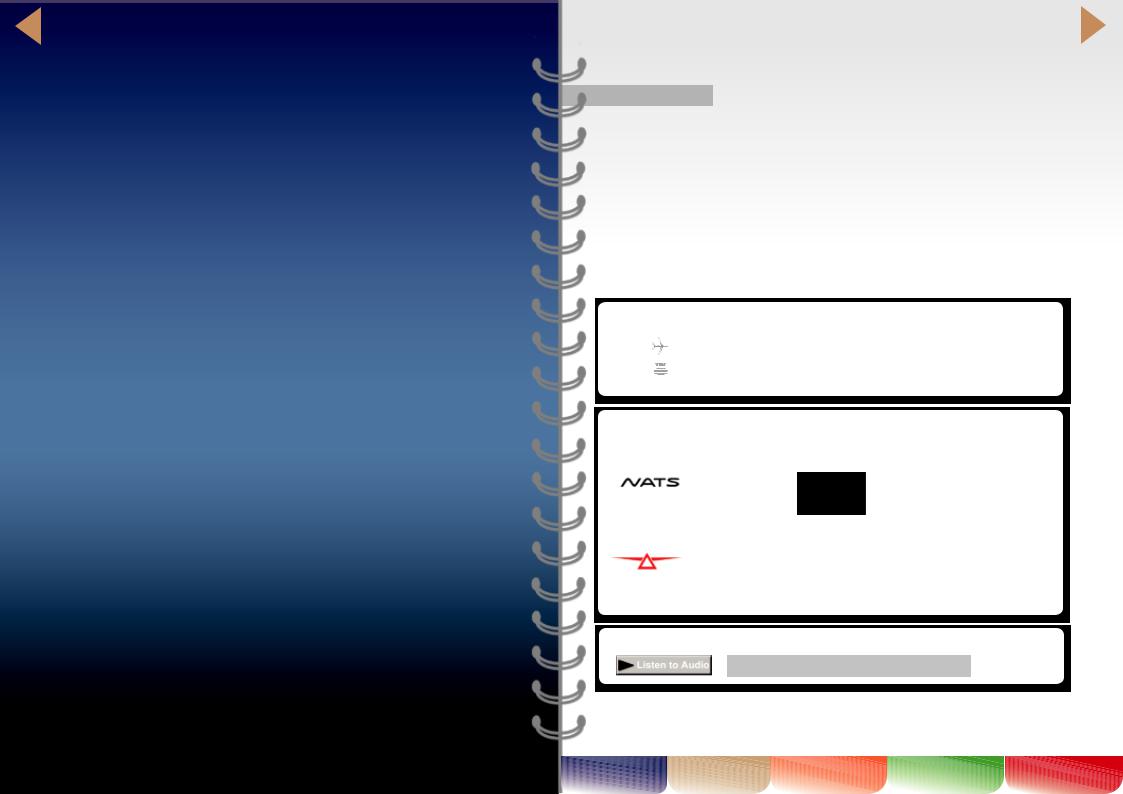
Enquiries regarding the content of this publication should be addressed to: Air Traffic Standards Department
Safety Regulation Group
Civil Aviation Authority Aviation House Gatwick Airport South West Sussex
RH6 0YR
The latest version of this document is available in electronic format at www.caa.co.uk
© Civil Aviation Authority 2007 ISBN 978 0 11790 716 4
1
Contents
|
|
|
1 |
|
Push and Start |
|
|
Taxi and Take-off |
2 |
|
|
|
|
Climb - Cruise - Descent |
3 |
|
|
|
|
Approach and Landing |
4 |
|
|
|
|
Emergency Communications |
5 |
|
RTF examples
Pilot |
|
Metro Ground, Big Jet 345, request taxi |
|
ATC |
|
|
|
|
|
||
|
Big Jet 345, Metro Ground, taxi holding point A1, hold short Runway 18 |
||
|
|
|
|
This booklet is a condensed version of CAP413 aimed at commercial pilots. The following individuals played a significant part in its production and distribution.
NATS: |
CAA - Safety Regulaton Group |
Paul Jones |
Maria Boyle |
David Orme |
Rob Holliday |
UK Flight Safety |
Thordis Ltd |
Committee |
John Freeman |
Ed Paintin |
|
Audio
Select this icon to listen to an audio of the RTF
|
|
|
introduction |
|
1 |
|
|
|
|
|
|
|
4 |
|
|
|
|
|
|
|
Push and |
Taxi and |
Climb - Cruise - |
Approach and |
Emergency |
|
|
Start |
Take-off |
Descent |
Landing |
Communications |
||

A Quick Reference Guide to UK
Phraseology For Commercial
Air Transport Pilots
A Supplement to CAP413 Radiotelephony Manual
Introduction
Communication error is a significant contributory factor in both level busts and runway incursions in the UK. This document aims to provide Commercial Air Transport (CAT) pilots and other pilots flying IFR
within controlled airspace with a quick reference guide to the most commonly used radiotelephony (RTF) phrases encountered during a routine CAT flight in the UK. It also explains some of the rationale behind the use of certain words and phrases to aid understanding and reinforce the need for compliance with standard phraseology. The goal is to improve safety by raising RTF standards.
The need for clear and unambiguous communication between pilots and Air Traffic Control (ATC) is 1 Push and Start vital in assisting the safe and expeditious operation of aircraft. It is important, therefore, that due regard is
given to the use of standard words and phrases and that all involved ensure that they maintain the highest professional standards when using RTF.
This is especially important when operating within busy sectors with congested frequencies where any time wasted with verbosity and non-standard, ambiguous phrases could lead to flight safety incidents.
Phraseology has evolved over time and has been carefully developed to provide maximum clarity and brevity in communications while ensuring that phrases are unambiguous. However, while standard phraseology is available to cover most routine situations, not every conceivable scenario will be catered for and RTF users should be prepared to use plain language when necessary following the principle of keeping phrases clear and concise.
15 |
introduction |
|
|
|
|
1 |
|
Push and |
Taxi and |
Climb - Cruise - |
Approach and |
Emergency |
|
|
Start |
Take-off |
Descent |
Landing |
Communications |
|
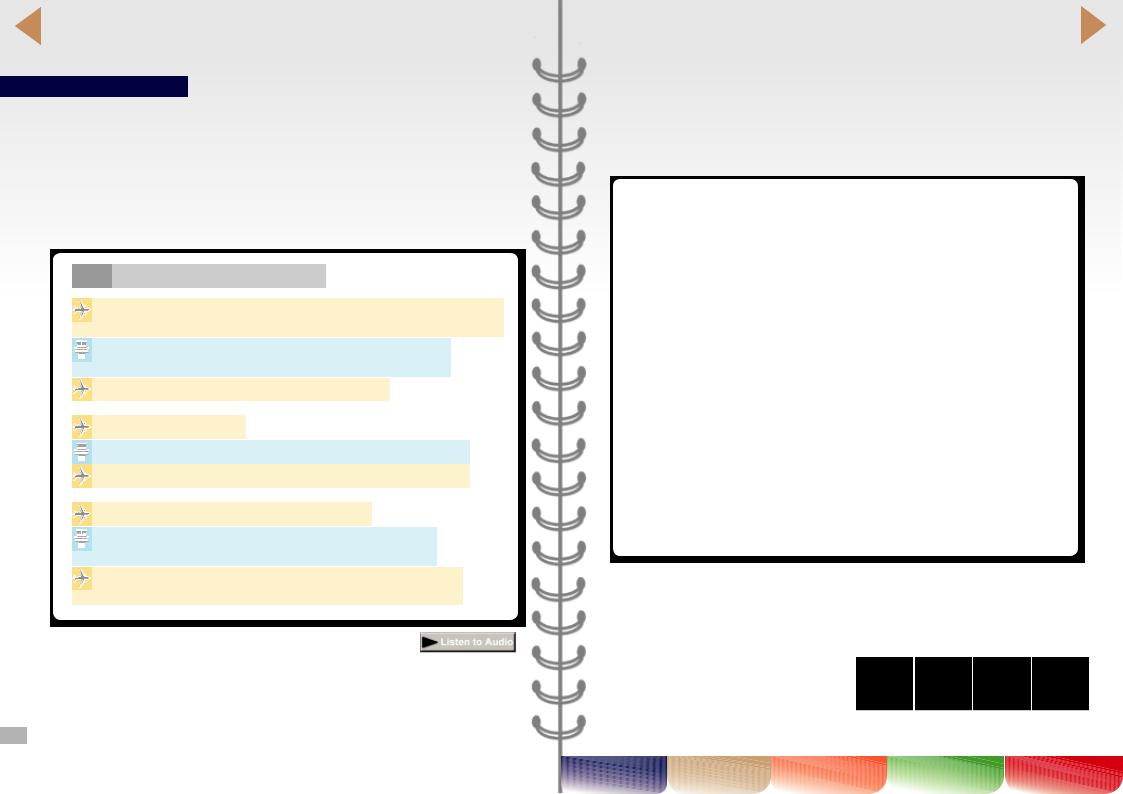
Push and Start
 A Conditional Push Back Clearance
A Conditional Push Back Clearance
Conditional clearances expedite traffic flow, but there are risks. Read-back must be in full and in the same sequence as given. A conditional push back clearance, shown below, allows push back after another action has first taken place ie. the condition of the clearance. Where there may be ambiguity as to the subject of the condition, additional details such as livery and/or colour are given to aid identification.
RTF Conditional Push Back Clearance
Metro Delivery, Big Jet 345, Stand Bravo 1, Boeing 737 with information Q,
QNH1006, request clearance
Big Jet 345, Metro Delivery, Cleared to Smallville, T1A departure,
Squawk 3456, slot time 1905
Cleared to Smallville, T1A, Squawk 3456, Big Jet 345
Big Jet 345, request start
Big Jet 345, start approved, contact Metro Ground 118.750 for push
Start approved, contact Metro Ground 118.750 for push, Big Jet 345
Metro Ground, Big Jet 345 Stand B1, request push
Big Jet 345, Metro Ground, after the red and white Airbus 321 passing behind, push approved
After the red and white Airbus 321 passing behind, push approved, Big
Jet 345
7 push and start
Top tips for avoiding communication error
Communication error is a significant contributory factor in both level busts and runway incursions in the United Kingdom.
The following tips for pilots will help improve RTF standards in UK airspace:
nUse standard phraseology at all times.
nMaintain RTF discipline - use clear and unambiguous phraseology at all times. Avoid unnecessary RTF.
nBoth pilots should monitor the frequency whenever possible.
nDo not read back a clearance as a question and avoid merely asking confirmatory questions on the flight-deck (eg. “He did say flight level 110 didn’t he?”). Much better to use ‘say again.’
nEnsure you pass all information relevant to your phase of flight. For example: on initial call only on departure, pass callsign, SID, passing level, cleared level or first step altitude.
nOn frequency changes, wait and listen before transmitting.
nTake particular care when issued with a conditional clearance. When reading back a conditional clearance, make sure you state the condition first.
nCheck RTF if there is a prolonged break in activity on the frequency.
nSet the clearance given, not the clearance expected.
nNote down ATC instructions when possible.
nIf you are unsure, always check.
|
|
|
PUSH AND START |
|
|
|
|
|
8 |
||
Push and |
Taxi and |
Climb - Cruise - |
Approach and |
Emergency |
|
Start |
Take-off |
Descent |
Landing |
Communications |
|
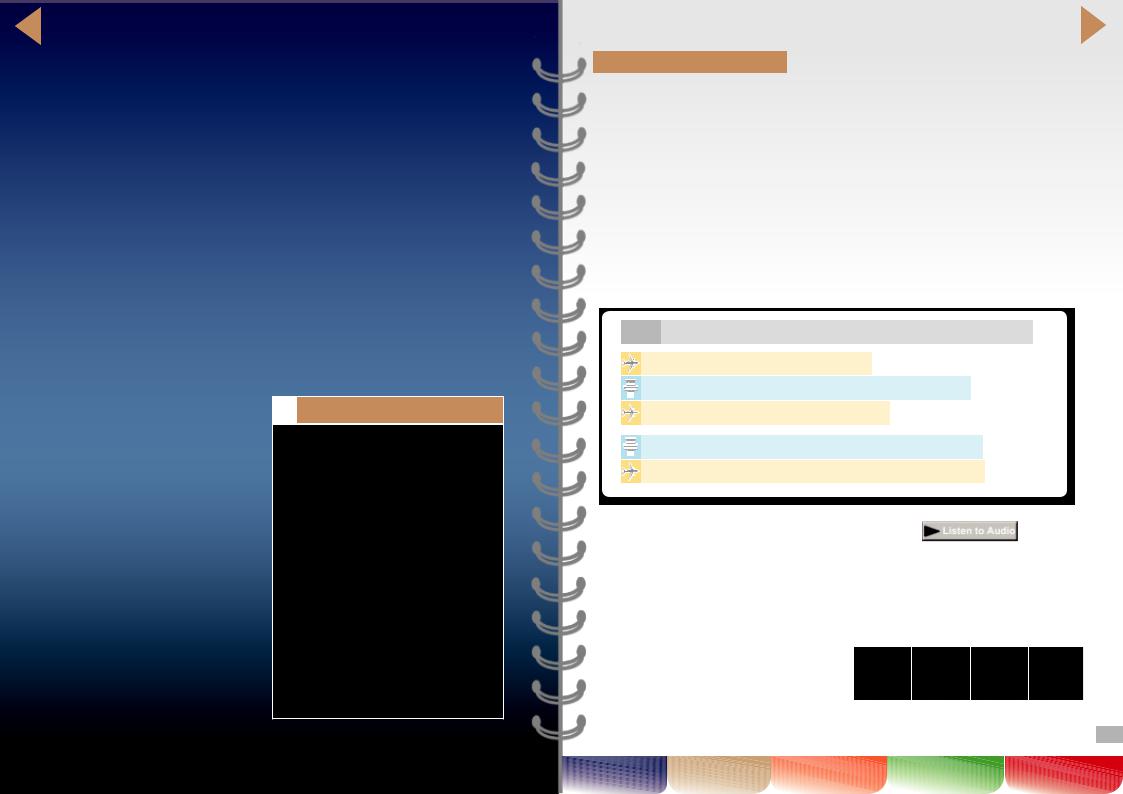
Taxi and Take-off
 Taxiing - A Safety Critical Activity
Taxiing - A Safety Critical Activity
The use of standard phraseology is crucial to the safety of the flight during taxiing. Any mistake that causes the aircraft to enter a runway in error could be catastrophic.
 Taxi Clearance Limit
Taxi Clearance Limit
All taxi clearances will contain a clearance limit, which is the point at which the aircraft must stop unless further permission to proceed is given.
 Noting Down Taxi Clearances
Noting Down Taxi Clearances
Complex or lengthy taxi clearances should be noted down by crews.
RTF Taxi Instructions To Hold Short Of Departure Runway
2 Taxi and Take-off
Metro Ground, Big Jet 345, request taxi
Big Jet 345, Metro Ground, taxi holding point C, Runway 27 Taxi holding point C, Runway 27, Big Jet 345
Big Jet 345, contact Metro Tower 119.2
Contact Metro Tower 119.2, Big Jet 345
|
|
|
|
taxi and take-off 10 |
|
1 |
|
|
|
||
|
Push and |
Taxi and |
Climb - Cruise - |
Approach and |
Emergency |
|
Start |
Take-off |
Descent |
Landing |
Communications |
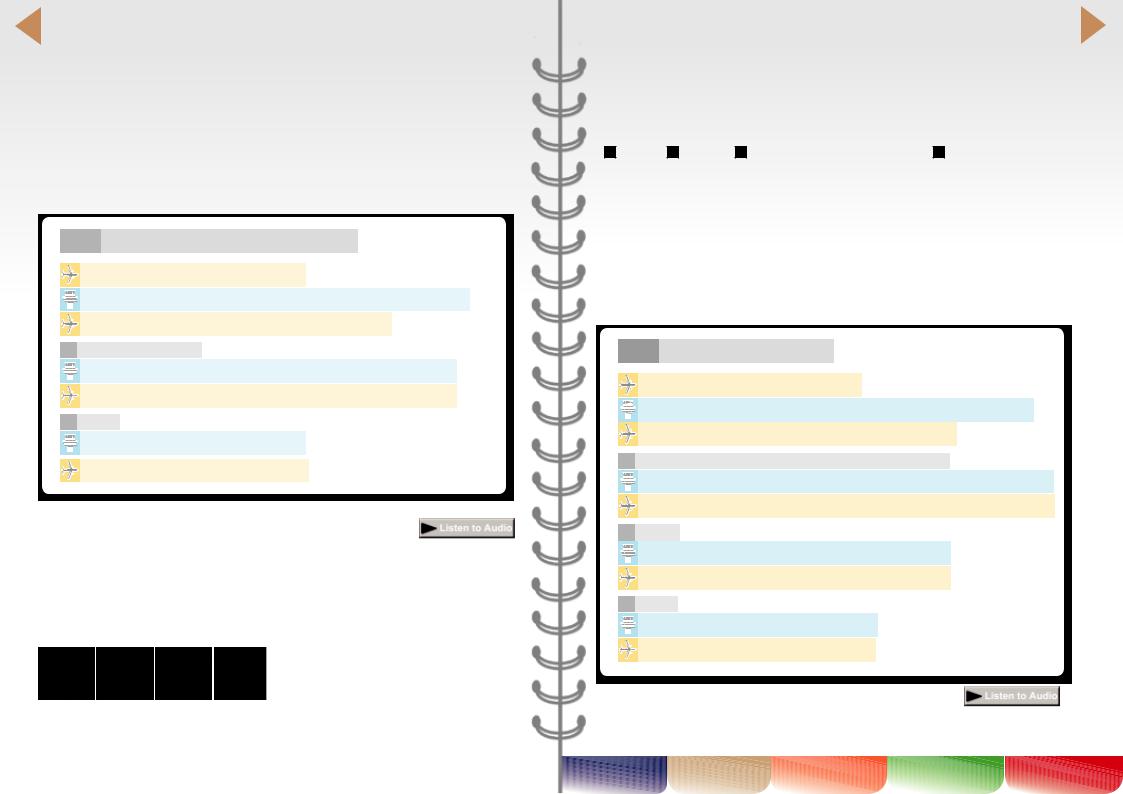
 Crossing an Intermediate Runway
Crossing an Intermediate Runway
If a taxi route involves crossing a runway, whether active or not, specific clearance to cross that runway is required.
 Departure Delay Information
Departure Delay Information
Departure sequence information such as‘number 5 to depart’ or‘expect departure in …’ is NOT a take-off clearance.
RTF Taxiing Across an Intermediate Runway
Metro Ground, Big Jet 345, request taxi
Big Jet 345, Metro Ground, taxi holding point A1, hold short Runway 18
Taxi holding point A1, hold short Runway 18, Big Jet 345
When traffic permits
Big Jet 345 cross Runway 18 at A1, taxi holding point C, Runway 27
Cross Runway 18 at A1, taxi holding point C, Runway 27, Big Jet 345
Then:
Big Jet 345, contact Metro Tower 119.2
Contact Metro Tower 119. 2, Big Jet 345
|
TAXI AND TAKE-OFF |
11 |
|
|
|
 Conditional Taxi Clearance
Conditional Taxi Clearance
A conditional taxi clearance allows the aircraft to taxi only after another action has taken place. The structure and order of conditional clearances is essential to their safe execution. Conditional clearances always consist of:
1 Call sign 2 Condition 3 Identity of the subject of the condition 4 Instruction The condition will relate to one movement only and, in the case of landing traffic, will always be the next aircraft to land.
nCorrect read-back of a conditional clearance is vital. The condition must be the first item read back so that the controller is aware that the pilot has heard the condition on which the clearance is based.
 After (UK Only)
After (UK Only)
The UK uses‘After’ in conditional clearances because‘Behind’ (ICAO) has been misinterpreted as an instruction to‘get close to’ the preceding aircraft, leading to serious jet blast incidents.
RTF Conditional Taxi Clearance
Metro Ground, Big Jet 345, request taxi
Big Jet 345, Metro Ground, taxi holding point C2, hold short Runway 09
Taxi holding point C2, hold short Runway 09, Big Jet 345
Conditional clearance to cross the intermediate runway
Big Jet 345, after the landing Little Jet Airbus 321, cross Runway 09 at C2
After the landing Little Jet Airbus 321, cross Runway 09 at C2, Big Jet 345
Then:
Big Jet 345, taxi holding point C1, hold short Runway 27
Taxi holding point C1, hold short Runway 27, Big Jet 345
Then:
Big Jet 345, contact Metro Tower 123.625
Contact Metro Tower 123.625, Big Jet 345
|
|
|
taxi and take-off |
|
|
|
|
|
12 |
||
Push and |
Taxi and |
Climb - Cruise - |
Approach and |
Emergency |
|
Start |
Take-off |
Descent |
Landing |
Communications |
|
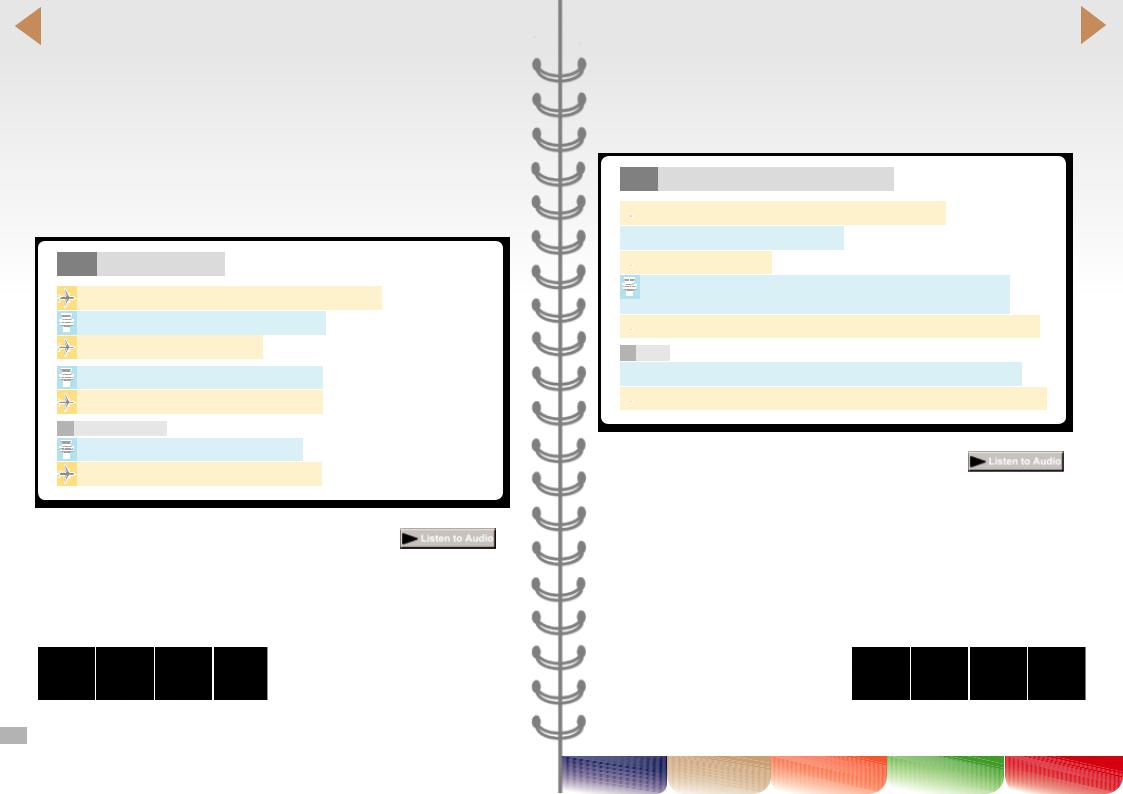
 Take-off
Take-off
‘Take-off’ shall only be used when issuing a clearance to take-off.
nIf the controller uses ‘after departure’ or ‘follow’, this is NOT a clearance to take-off. In the airport environment, the word ‘cleared’ shall only be used in connection with a clearance to take-off or land. For any other RTF exchanges, words such as ‘cross’ and ‘approved’ will be used. To aid clarity, a take-off clearance will always be issued separately. Revised departure instructions shall be prefixed with an instruction to ‘hold position’ and ‘after departure’ shall be used when issuing airways or route clearances.
RTF Take-off Clearance
Metro Tower, Big Jet 345, approaching holding point C1
Big Jet 345, Metro Tower, line up Runway 27
Line up Runway 27, Big Jet 345
Big Jet 345, cleared for take-off Runway 27
Cleared for take-off Runway 27, Big Jet 345
Once airborne:
Big Jet 345, contact Metro Radar 124.6
Contact Metro Radar on 124.6, Big Jet 345
13 taxi and take-off
 Amendment to Departure Clearance
Amendment to Departure Clearance
Amendments to departure clearances are known to contribute to runway incursion incidents. The phraseology for amendments to departure clearances where the aircraft is approaching the runway will begin with ‘hold position’.
RTF Amendment to Departure Clearance
 Metro Tower, Big Jet 345, approaching holding point C1
Metro Tower, Big Jet 345, approaching holding point C1
 Big Jet 345, Metro Tower, hold at C1
Big Jet 345, Metro Tower, hold at C1
 Hold at C1, Big Jet 345
Hold at C1, Big Jet 345
Big Jet 345, hold position, amendment to clearance, T3F departure, climb to altitude 6000 feet
 Holding position, T3F departure, climb to altitude 6000 feet, Big Jet 345
Holding position, T3F departure, climb to altitude 6000 feet, Big Jet 345
Or:
 Big Jet 345 hold position, after departure climb to altitude 6000 feet
Big Jet 345 hold position, after departure climb to altitude 6000 feet
 Holding position, after departure climb to altitude 6000 feet, Big Jet 345
Holding position, after departure climb to altitude 6000 feet, Big Jet 345
|
|
|
taxi and take-off |
|
|
|
|
|
14 |
||
Push and |
Taxi and |
Climb - Cruise - |
Approach and |
Emergency |
|
Start |
Take-off |
Descent |
Landing |
Communications |
|
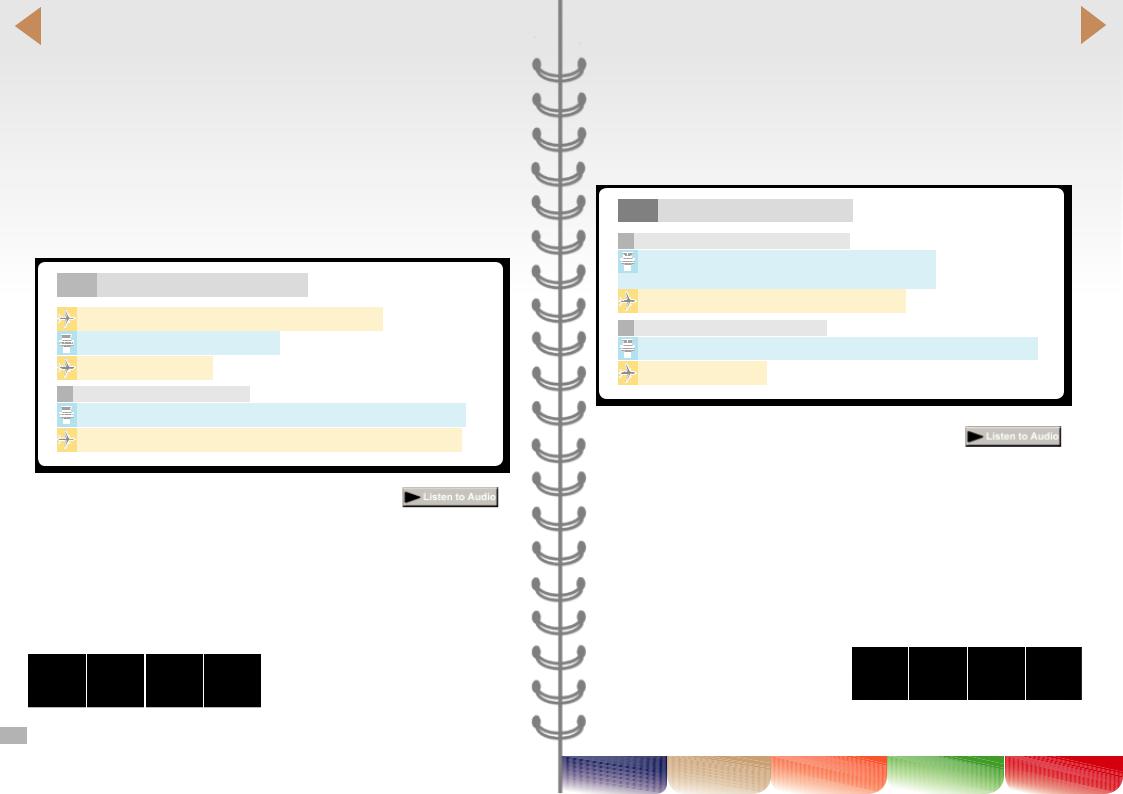
 Conditional Line-Up Clearance
Conditional Line-Up Clearance
Important points involving the active runway:
nThe condition is always given first.
nConditional clearances must be read back in full and in exactly the same sequence
as given.
nThe aircraft that is the subject of the condition must be visible to the flight crew and the controller.
nIn the case of landing traffic, the subject of the condition will be the next aircraft to land.
nThe condition must relate to only one movement.
nAlways clarify if unsure.
RTF A Conditional Line Up Clearance
Metro Tower, Big Jet 345, approaching holding point C1
Big Jet 345, Metro Tower, hold at C1
Hold at C1, Big Jet 345
Conditional line up clearance:
Big Jet 345, after the landing company Boeing 757, line up Runway 27 After the landing company Boeing 757, line up Runway 27 Big Jet 345
15 taxi and take-off
 Cancelling Take-off Clearance
Cancelling Take-off Clearance
If take-off clearance has to be cancelled before the take-off run has commenced, the flight crew shall be instructed to hold position and to acknowledge the instruction.
nIf it is necessary to cancel take-off clearance after the aircraft has commenced the take-off run, the flight crew shall be instructed to stop immediately and to acknowledge the instruction.
RTF Cancelling Take-off Clearance
Aircraft has not commenced take-off:
Big Jet 345 hold position, Cancel take-off, I say again cancel take-off, acknowledge
Take-off cancelled, holding position, Big Jet 345
Aircraft has commenced take-off:
Big Jet 345 stop immediately, I say again stop immediately, acknowledge
Stopping, Big Jet 345
|
|
|
taxi and take-off |
|
|
|
|
|
16 |
||
Push and |
Taxi and |
Climb - Cruise - |
Approach and |
Emergency |
|
Start |
Take-off |
Descent |
Landing |
Communications |
|
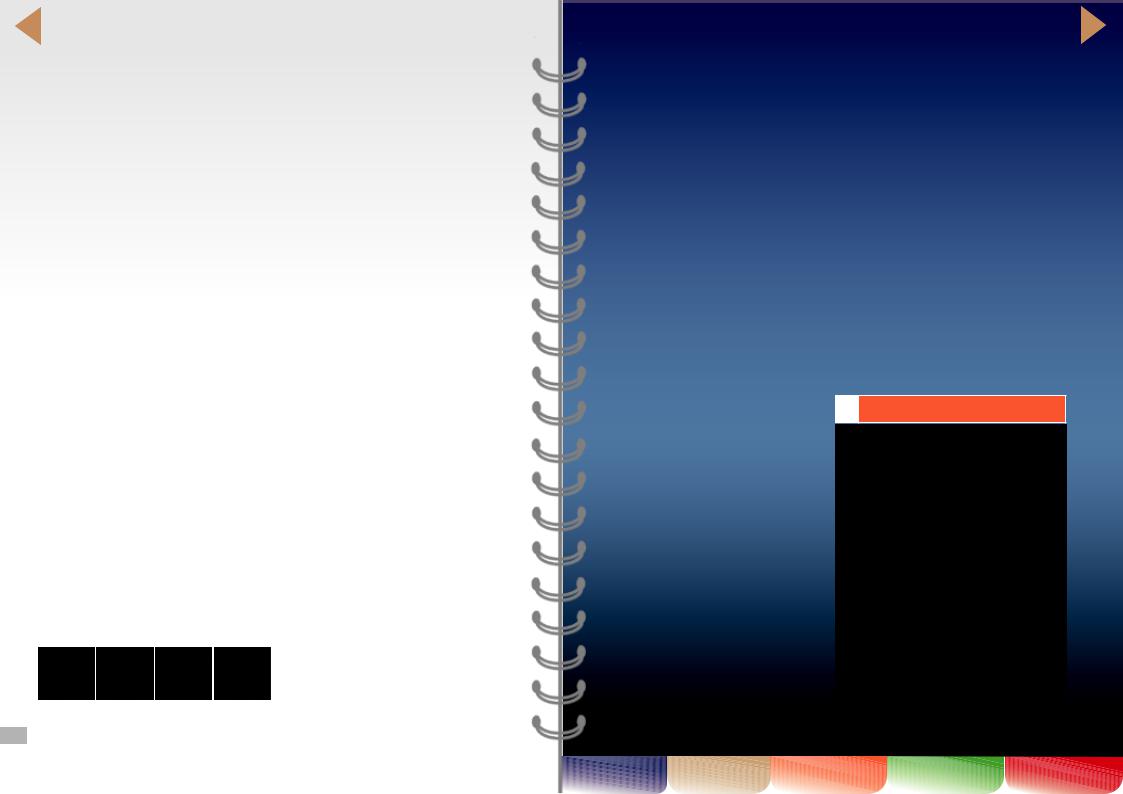
 Read-back
Read-back
Correct read-back is vital as it enables mutual understanding between the pilot and the controller of the intended plan for that aircraft.
nFollowing correct read-back the flight crew must ensure that they carry out the correct action. Statistics show that the most common cause of a level bust in the UK is correct read-back followed by incorrect action.
nStrategies to prevent the above error include noting down the clearance prior to read-back and ensuring that both flight crew members listen to all clearances, including taxi clearance. If in doubt check!
 Messages Containing The Following Must Be Read Back
Messages Containing The Following Must Be Read Back
n Taxi instructions |
n Any runway clearance |
n Level instructions |
n SSR operating instructions |
n Heading instructions |
n Altimeter settings |
n Speed instructions |
n VDF information |
n Airways/route clearances |
n Frequency changes |
n Approach clearances |
n Type of radar service |
n Runway in use |
n Transition levels |
Checking the accuracy of a read-back is far easier if the information is read back in the same order as given. The missing elements of incomplete read-backs are more difficult to detect and correct than an error in a read-back.
n When a read-back is required ensure it is complete and in the order given.
3 Climb - Cruise - Descent
17 |
taxi and take-off |
|
|
|
|
|
|
|
|
|
1 |
||
|
Push and |
Taxi and |
Climb - Cruise - |
Approach and |
Emergency |
|
|
Start |
Take-off |
Descent |
Landing |
Communications |
|
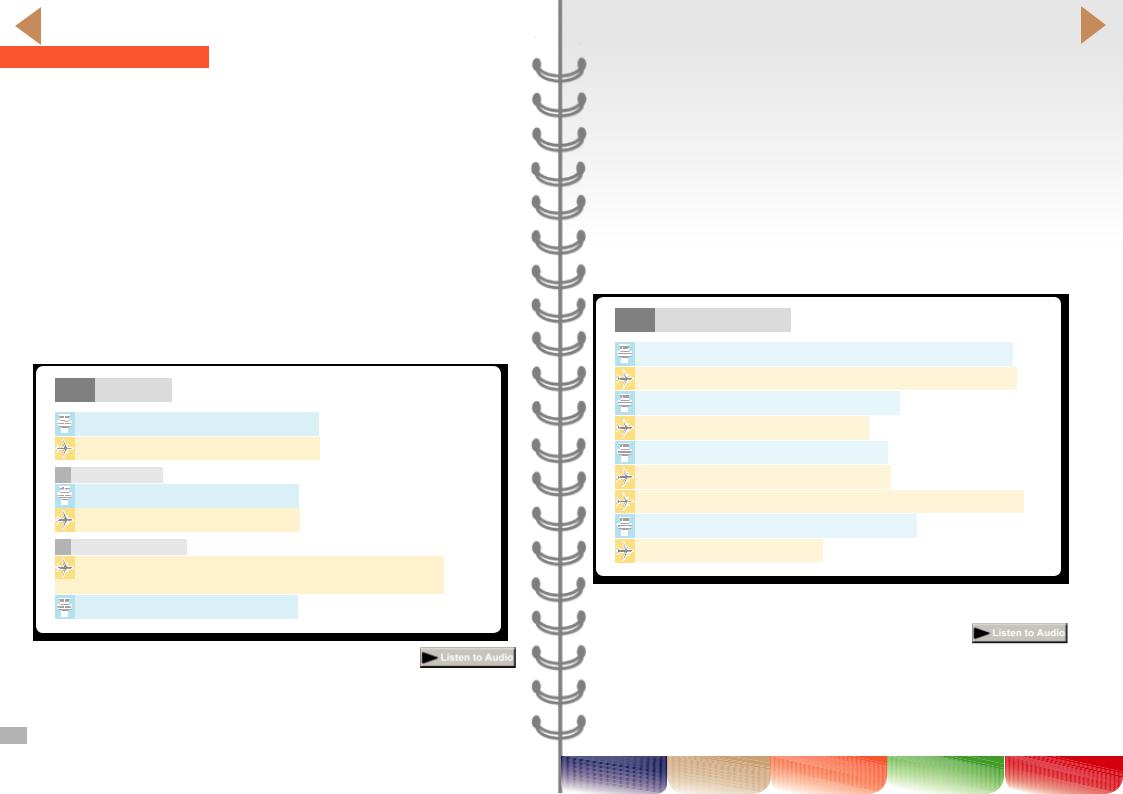
Climb - Cruise - Descent
 Initial Calls
Initial Calls
Studies show that an initial call which does not contain all the required information can lead to a loss of separation. On first contact after departure include:
nCallsign
nSID
nCurrent or passing level (to allow Mode C to be verified) plus cleared level.
The information in the initial call is essential for the safety of the aircraft by ensuring mutual understanding between the crew and the controller of the intended plan for the aircraft. Omissions will require an additional call for clarification which may lead to frequency congestion.
On first contact with subsequent frequencies include callsign and:
nCurrent level
nCleared level (or if not in level flight, cleared level only)
nIf assigned by ATC, speed or a heading.
RTF Initial Call
Big Jet 345, cleared for take-off Runway 27
Cleared for take-off Runway 27, Big Jet 345
Once airborne:
Big Jet 345, contact Metro Radar 124.6
Contact Metro Radar 124.6, Big Jet 345
Initial call to radar:
Metro Radar, Big Jet 345, T3F, passing altitude 2300 feet climbing to altitude 6000 feet
Big Jet 345, Metro Radar, squawk ident
19 CLIMB-CRUISE-DESCENT
 Degrees
Degrees
‘Degrees’ shall be appended to any heading ending in zero to prevent headings being confused with flight levels.
 Flight Levels
Flight Levels
In the UK, flight levels of whole hundreds are transmitted as flight level one hundred/two hundred etc as mitigation against level busts. The ICAO phrase flight level one zero zero is not used.
nFlight levels below FL100 are referred to as two digit numbers e.g. Climb flight level eight zero to reduce the risk of confusion with a heading instruction e.g. heading zero eight zero.
 En-Route RTF
En-Route RTF
RTF En-Route Examples
Big Jet 345, fly heading 260 degrees, climb FL 100, no speed control
Fly heading 260 degrees, climb FL 100, no speed control, Big Jet 345
Big Jet 345, route direct BONNY, climb FL 360
Direct BONNY, climb FL 360, Big Jet 345
Big Jet 345, contact Northern Control, 132.6
Contact Northern Control, 132.6, Big Jet 345
Northern Control, Big Jet 345, climbing FL 360, routing direct BONNY
Big Jet 345, Northern Control, route direct CLYDE
Route direct CLYDE, Big Jet 345
|
|
|
CLIMB-CRUISE-DESCENT |
|
|
|
|
|
|
|
20 |
||
Push and |
Taxi and |
Climb - Cruise - |
Approach and |
Emergency |
|
|
Start |
Take-off |
Descent |
Landing |
Communications |
||
